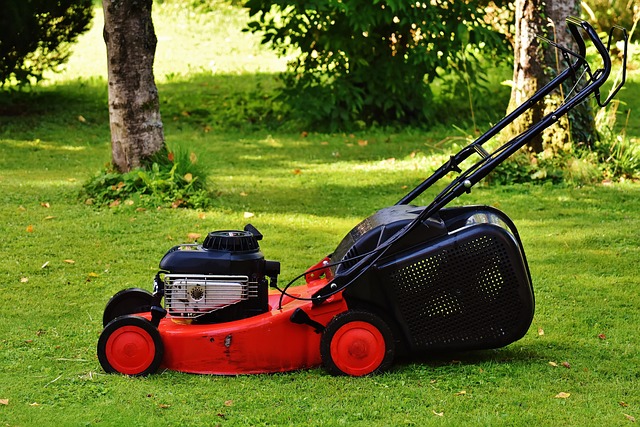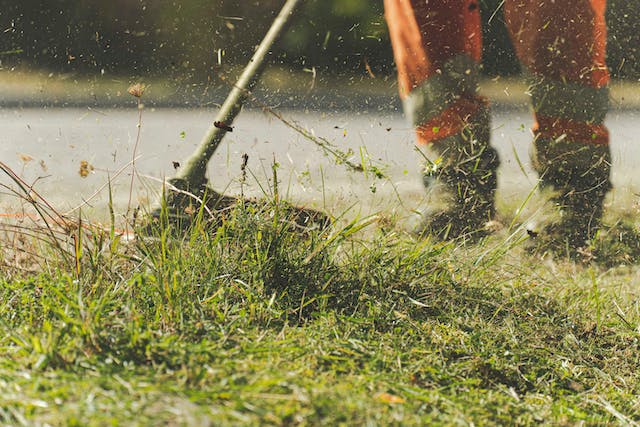As the vibrant colors of autumn fade away, and the chill in the air signals the arrival of winter, homeowners in North Texas must shift their focus to preparing their lawns for the colder months ahead. Winter lawn care is often overlooked, but proper maintenance during this season is essential to ensure a lush and healthy lawn when spring arrives. In this guide, we’ll explore the specific steps you can take to prepare your lawn for the winter in North Texas.
Article Sponsor: Frisco Pressure Washing
Lawn Mowing and Trimming:
Before the first frost hits, it’s essential to give your lawn a proper trim. Set your mower at a lower height than usual to ensure that the grass isn’t too tall going into winter. Longer grass can be susceptible to diseases and pests during the colder months. Additionally, trim any overhanging branches to allow sunlight to reach the grass and promote healthy growth.

Lawn Aeration:
Aeration is a crucial step in winter lawn care. Compacted soil can restrict the flow of air, water, and nutrients to the grassroots. Aerating your lawn helps alleviate compaction, allowing for better penetration of oxygen and nutrients. Consider using a plug aerator to remove small cores of soil from the lawn, promoting a healthier root system.
Overseeding:
Overseeding is the process of sowing grass seed over existing turf. It helps fill in bare spots, improves density, and introduces new, resilient grass varieties. Opt for a cool-season grass blend suitable for North Texas, such as fescue or ryegrass. Overseeding in the fall ensures that the new grass has time to establish itself before the winter chill sets in.
Fertilization:
Late fall is the ideal time to provide your lawn with a balanced, slow-release fertilizer. This application supplies essential nutrients that promote root growth and overall lawn health during the winter months. Look for a fertilizer with a higher ratio of phosphorus, which supports strong root development. Avoid fertilizers high in nitrogen, as they can encourage new growth that may be damaged by frost.
Weed Control:
Take proactive measures to control weeds before winter sets in. Weeds can compete with grass for nutrients and water, hindering the overall health of your lawn. Apply a pre-emergent herbicide in the fall to prevent weed seeds from germinating. Additionally, manually remove any existing weeds to prevent them from going to seed and spreading.

Mulching:
Mulching is not only beneficial for flower beds but also for your lawn. A layer of mulch helps insulate the soil, providing a buffer against extreme temperatures. Apply a thin layer of organic mulch, such as straw or shredded leaves, to help retain moisture and regulate soil temperature. Be cautious not to over-mulch, as excessive mulch can create a habitat for pests and diseases.
Irrigation Adjustments:
As the temperatures drop, adjust your irrigation schedule to reflect the reduced water needs of your lawn. Overwatering can lead to fungal diseases, so it’s essential to find the right balance. Consider investing in a rain sensor for your irrigation system to prevent unnecessary watering during wet periods.
Protecting Sensitive Plants:
If you have delicate plants or shrubs in your lawn, consider covering them with burlap or frost cloth to protect them from freezing temperatures. Additionally, potted plants should be brought indoors or grouped in a sheltered area to provide extra warmth.
Preparing your lawn for winter in North Texas requires a combination of proactive measures and strategic planning. By following these steps, you can ensure that your lawn enters the colder months in optimal condition, ready to withstand the challenges of winter and thrive when spring arrives. Remember, a little effort now can make a significant difference in the health and appearance of your lawn in the seasons to come.
Thank you for visiting our site. If you have comments or questions, please contact us today. We also ask that you visit our sponsor: Pressure Washing Frisco